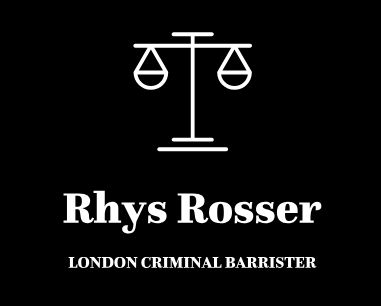What are the rules on Tachograph Recording?
Rhys is regularly asked to advise as to the rules on the recording of Tachograph hours where a vehicle is not technically being used for the transport of goods

Article 34 (1) of Regulation (EU) No 165/2014 of the European Parliament and of the Council states that:
Drivers shall use record sheets or driver cards every day on which they are driving, starting from the moment they take over the vehicle. The record sheet or driver card shall not be withdrawn before the end of the daily working period unless its withdrawal is otherwise authorised. No record sheet or driver card may be used to cover a period longer than that for which it is intended.
There is further guidance provided by the Article in that the meaning of driving is given the same meaning as working time in Regulation 2 of the Road Transport (Working Time) Regulations 2005. Working time is defined as follows:
the time from the beginning to the end of work during which –
(a) the mobile worker or self-employed driver is at his workstation;
(b) the mobile worker is at the disposal of his employer, or (as applicable) the self employed driver is at the disposal of the client; and
(c) the mobile worker or self-employed driver is exercising his functions or activities, being:
(i) time devoted to all road transport activities, including, in particular—
(aa) driving;
(bb) loading and unloading;
(cc) assisting passengers boarding and disembarking from the vehicle;
(dd) cleaning and technical maintenance;
(ee) all other work intended to ensure the safety of the vehicle, its cargo and passengers or to fulfil the legal or regulatory obligations directly linked to the specific transport operation under way, including monitoring of loading and unloading and dealing with administrative formalities with police, customs, immigration officers and others; or
(ii) time during which the mobile worker or self-employed driver cannot dispose freely of his time and is required (or, in relation to a self-employed driver, chooses) to be at his workstation, ready to take up normal work, with certain tasks associated with being on duty, in particular during periods awaiting loading or unloading where their foreseeable duration is not known in advance, that is to say either before departure or just before the actual start of the period in question, or under collective agreements or workforce agreements;
but, in relation to self-employed drivers, general administrative work that is not directly linked to the specific transport operation under way is excluded from working time.
Article 3(g) of Regulation (EC) No 561/2006 of the European Parliament and of the Council states it “shall not apply to carriage by road by vehicles undergoing road tests for technical development, repair or maintenance purposes, and new or rebuilt vehicles which have not yet been put into service.”
Furthermore, EC561/2006 continues that under Article 4(a) ‘carriage by road’ means any journey made entirely or in part on roads open to the public by a vehicle, whether laden or not, used for the carriage of passengers or goods.
The key section is in the definition of working time as set out above at para 4. Whilst the employee would have been at the employer’s disposal, it is then a question of whether the meaning of driving is limited to driving as part of the specific transport operation underway. Thus qualifying the meaning of driving in the above definition. The taking of a vehicle for an MOT test would not seem to relate to the specific transport operation underway on the face of it.
There is further support for this position as outlined in Article 3(g) of Regulation (EC) No 561/2006 which provides an exemption for where road testing is taking place. One of the peculiarities of the legislation in this instance is that if the vehicle were being driven during an MOT test, this would not require a tachograph.
EU rules (Regulation (EC) 561/2006) apply to vehicles used for the carriage of goods.
The term “goods” includes goods or burden of any description. It doesn’t include parts of a vehicle or trailer’s fixed equipment manufactured as part of the vehicle or trailer and which enable the extension of the fixed equipment. It also doesn’t include ballast used for the purpose of road testing a vehicle or for MOT or annual test purposes provided the ballast is a non-commercial load.
Non-commercial carriage is defined as any carriage by road, other than carriage for hire or reward or on own account, for which no direct or indirect remuneration is received and which does not directly or indirectly generate any income for the driver of the vehicle or for others and which is not linked to professional or commercial activity.
There is an additional caveat in that drivers who are employed to drive vehicles which would normally be in scope of EU/ AETR rules but who never carry goods or passengers in the course of that employment (and for agency drivers this means each individual placement) are not considered to be within scope of the regulations. This would specifically include empty vehicles being driven to or from annual test and driving a vehicle for the purpose of moving it between depots.
There are two interpretations of the above, either it applies to all drivers where the vehicle is not being driven for hire or reward or it applies to those drivers who do not usually drive for hire or reward and are driving the vehicle for the purpose set out above. I take the view that it applies to the latter and as such if a driver, who normally drives for hire and reward, takes a vehicle for an MOT they should be declaring the hours as working time and/or using the digital tachograph.
Rhys' View
This is an area in which there is no clear answer, it is arguable that there is a Defence where a driver takes a vehicle for an MOT. However, the position domestically appears to be that if an individual ordinarily drives for hire or reward they should have had a tachograph installed and record any hours accordingly.
Notwithstanding the above, it is very important to obtain legal advice in this area and for representations to be drafted.
Fill in the Below to Contact Rhys and to obtain legal advice










